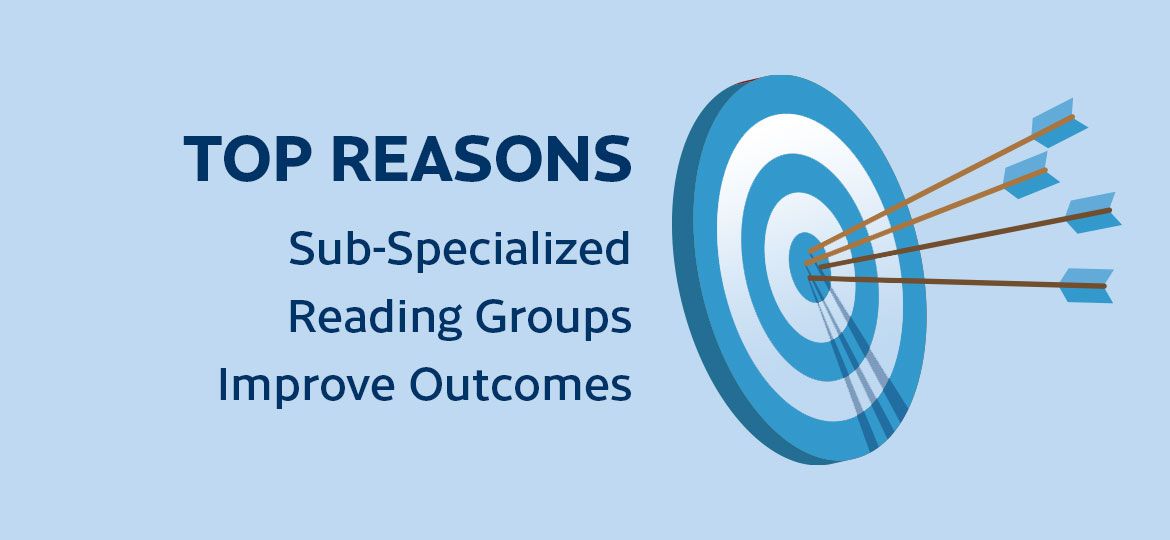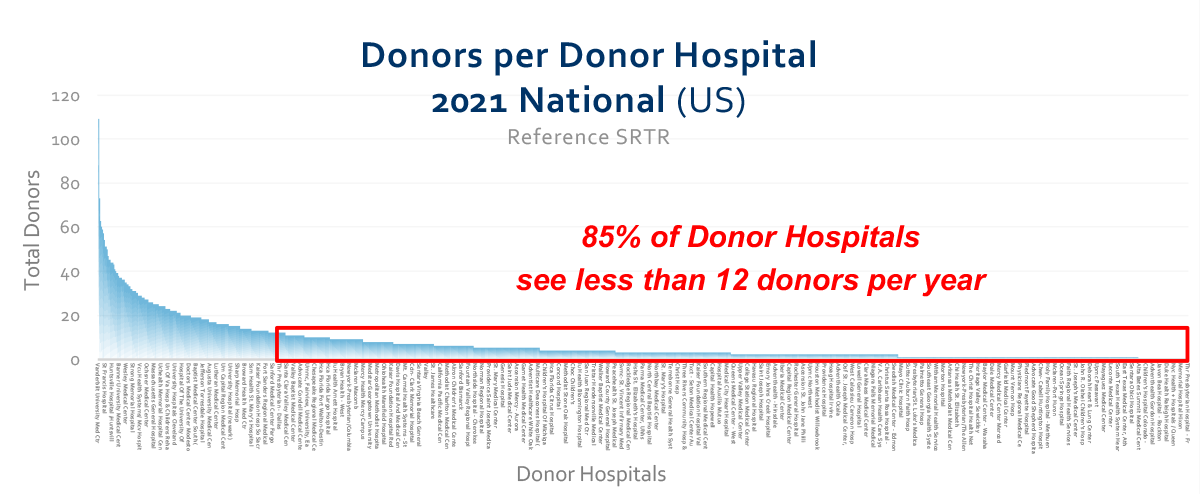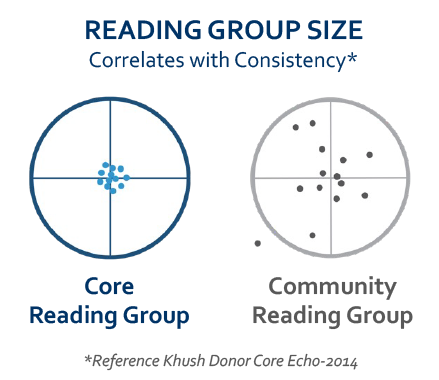
Four Reasons Why
Sub-Specialized Physicians Matter
Organ procurement is already a high-stakes, time-sensitive mission. Decisions must be made quickly – and always based on the clearest, most accurate donor data possible. That’s where the right diagnostic partner can make all the difference.
Not all remote diagnostic services are built the same. At CompuMed, our network isn’t made up of generalists doing their best with limited donor-specific study exposure. It’s a small core reading group of board-certified, sub-specialized physicians – experts trained and experienced in donor-focused diagnostics across cardiology, pathology, pulmonology and radiology. Available 24/7/365, this group brings accuracy, speed and consistency to every case.
And those distinct traits? They’re not coincidence. They’re by design.
Understanding the Long Tail
To understand the challenge, consider the long tail in organ donation. There are approximately 6,500 hospitals in the U.S., but in any given year, only 2,000 of these hospitals have a successful organ donor. Of the 2,000 donor hospitals, most manage a very low volume of cases – with 50% seeing just three or fewer donors a year and 85% of donor hospitals seeing fewer than one a month.

As a result, each donor study is often interpreted by a different hospital physician, many of whom only see one or two such cases a year.
“Consistency is a challenge when donor-specific studies are read by such a large community group,” says Lee Keddie, CEO of CompuMed. “We estimate that approximately 4,600 different cardiologists read the 5,000 echoes performed in U.S. donor hospitals each year. It’s even more amplified for pathology reads, since there are numerous sub-specialty requirements, which are typically unavailable for donor cases.”
“In 2021, 85% of donor hospitals covered 50% of donor cases, which means there’s limited repetition and little standardization,” he continues. “You can understand why transplant surgeons would want to look at the images themselves.”
This fragmented approach can have a ripple effect: low confidence in organ acceptance, more declined organs and a higher risk of dry runs. And that doesn’t just impact the current case. It can shape future decisions, too.
A Purpose-Built Team for Donor Cases
What’s different about CompuMed? Our core reading group is a small, purpose-built team of sub-specialists who see a comparatively high volume of donor-specific studies, not a scattering of clinical cases. This exposure matters.
“Our sub-specialists see the equivalent of 15 years of donor-specific experience in a single year with us,” says Lee. “Even if a physician spent 10 years reading hospital-based cases, they wouldn’t experience the volume of donor studies our team sees in just twelve months. You simply don’t see that kind of transplant-specific volume in a single hospital setting.”
By consolidating donor-specific diagnostics through a small core reading group of sub-specialists, we reduce the inconsistency that naturally arises from thousands of physicians interpreting low-frequency cases. The result is better standardization, faster turnaround times and more confident decision-making across the donation and transplantation process.

Four Ways Sub-Specialists Drive Better Outcomes
So, how does our sub-specialist network drive these improvements that lead to better outcomes? We believe it comes down to four key pillars: availability, accuracy, consistency and improvability.1. Availability, 24/7/365
Organ donation doesn’t follow a 9-to-5 schedule, and neither do we. Our sub-specialists are on-call around the clock, ready to provide STAT reads and real-time consultation when it matters most.
“Our team is here when you need us – no delays, no gaps in coverage,” says CompuMed Chief Operating Officer Laura Carroll. “And unlike hospital specialists who are focused on reading studies for patients of their hospitals, you can speak directly to CompuMed sub-specialists dedicated to each case.”
2. Accuracy Through Experience
Our physicians don’t just read donor-specific studies – they specialize in them. That narrow focus allows them to provide insights tailored specifically for transplant. For example, our pathology reads don’t just deliver a diagnosis – they anticipate what transplant teams need to know to move forward confidently with organ acceptance.
With every interpretation, our reads are backed up by the ability to “show our work” through advanced technologies. For instance, our renal biopsy reports provide comprehensive details and supporting citations, combined with AI-powered tagging and measurements, to deliver clear, evidence-backed insights that enable transplant surgeons to drill down and self-verify details in real time.
3. Consistency You Can Trust
A small core reading group means interpretations are not only accurate but also consistent. Standardized reporting, peer reviews and strong collaboration between specialists ensure that every case meets the same high bar.
As one OPO partner puts it:
“The reads include critical information that transplant teams want to see, and the read time is much faster than hospital reads.”
– Manager of Organ Operations, Gift of Hope
4. Improvability of Reports over Time
Because our core reading group is collaborative and focused on continuous learning, we can adapt quickly.
“It’s dynamic,” says Lee. “If an OPO identifies an opportunity to improve donor management or organ acceptance, our team can quickly incorporate these adjustments into our workflow. The fantastic part of this is that we can scale these improvements across all OPOs, bringing a benefit to the donation and transplantation community at large.”
We can also revise our reporting if donor-specific guidance from OPTN or other regulatory bodies is updated. Far from a static process – our processes are constantly evolving to better serve OPOs and transplant centers with the information they need for better outcomes.
Seamless Integration into Your Workflow
Even the most timely, accurate and consistent donor-specific reports are only valuable if they reach the right hands fast. That’s why our tools are designed not only to deliver better transplant-focused interpretations but also to fit seamlessly into your existing workflow.
Our Direct Connect platform is a universal DICOM image-sharing solution that integrates easily with donor hospital and DCU systems, enabling near-instant image-sharing and access. Our centralized, cloud-based Donor Management Portal provides a single source of truth for donor management, combining donor data, reports, images and more in one secure location.
Empowering Better Decision-Making Leads to More Organs Transplanted
Our sub-specialist network is here to fill the gap that comes with low-frequency donor studies and give your teams and transplant surgeons greater confidence in every organ offer and decision.
By consolidating expertise and focusing on the donation and transplantation process, we aim to help unlock the full potential of every donation opportunity. If you’re ready to explore how our sub-specialized team can support your mission and vision for serving transplant partners and donor heroes, let’s connect today.

